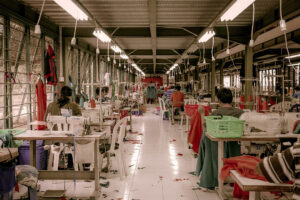MANUFACTURING OUTPUT sank to a three-month low in February due to slowing markets and reduced consumer spending, the Philippine Statistics Authority (PSA) reported on Tuesday.
Citing preliminary results from the Monthly Integrated Survey of Selected Industries, the PSA said factory production in February, as measured by the volume of production index (VoPI), declined 2.4% year on year in February, reversing the revised 3.2% from a year earlier and the revised 2.3% reported in January.
The February reading was the weakest since the 4.2% contraction in November.
Month on month, the manufacturing VoPI fell 4.6%, from a reading of 0.7% growth in January. Stripping out seasonal factors, output contracted 3.5%.
In the first two months, factory output declined 0.1%, well behind the year-earlier 1.4% average expansion.
The Philippine S&P Global Manufacturing Purchasing Managers’ Index (PMI) eased further to 51 in February from 52.3 in January, the weakest since the 50.9 reading in March 2024.
PMIs are a gauge of the volume of raw material orders, which will be turned into manufactured goods later. A PMI reading below 50 points to a contraction in future manufacturing activity, while expansions are signaled by PMIs above 50.
Leonardo A. Lanzona, Jr., an economics professor at the Ateneo de Manila, said decreased factory output during February lines up with the slowing markets, contributing to the decline in inflation in the same period.
Headline inflation eased in February to 2.1% from 2.9% in January, the lowest level in five months, driven by a deceleration in food prices.
“As aggregate demand decreased due to low incomes and productivity, the overall level of prices also slowed down,” Mr. Lanzona said via Messenger.
“While unemployment seems to be decreasing, these are all low-quality types of jobs found in the service and informal sectors.”
Mr. Lanzona also said that the Philippines became dependent on imports, particularly food imports, and debt to push consumption.
“The Trump tariff threats constitute now an opportunity to restructure our industries. We cannot rely anymore the existing global value chains since these will be restructured by US policies.”
US President Donald J. Trump announced baseline tariffs of 10% for all US trading partners last April 2. Starting April 9, Philippine goods will be subject to a 17% tariff.
The average capacity utilization rate was 75.9% in February, above the 74.4% from February 2024, but less than the revised January reading of 76%
Seventeen out of 22 industry categories posted average capacity utilization of at least 70%. — Pierce Oel A. Montalvo















